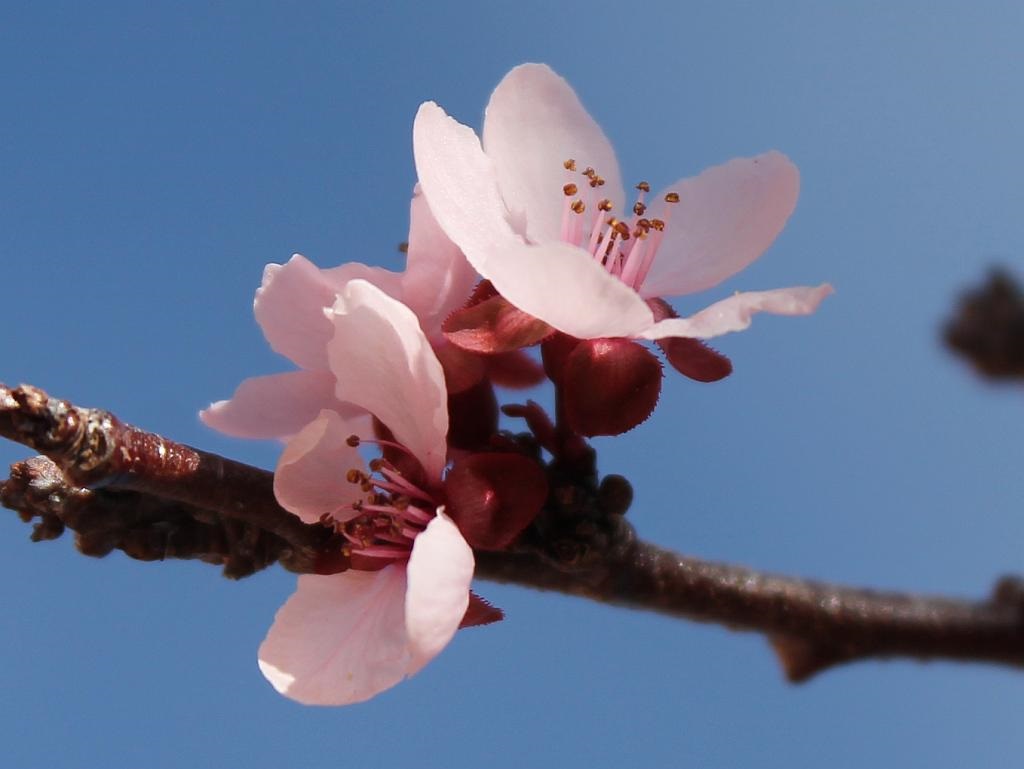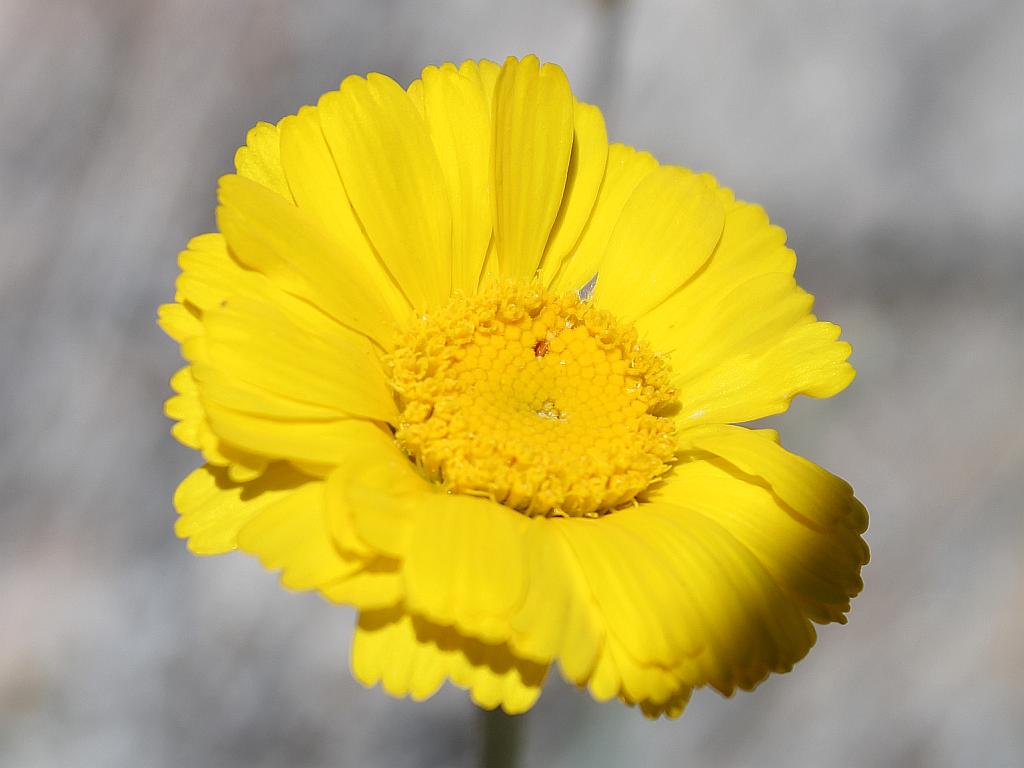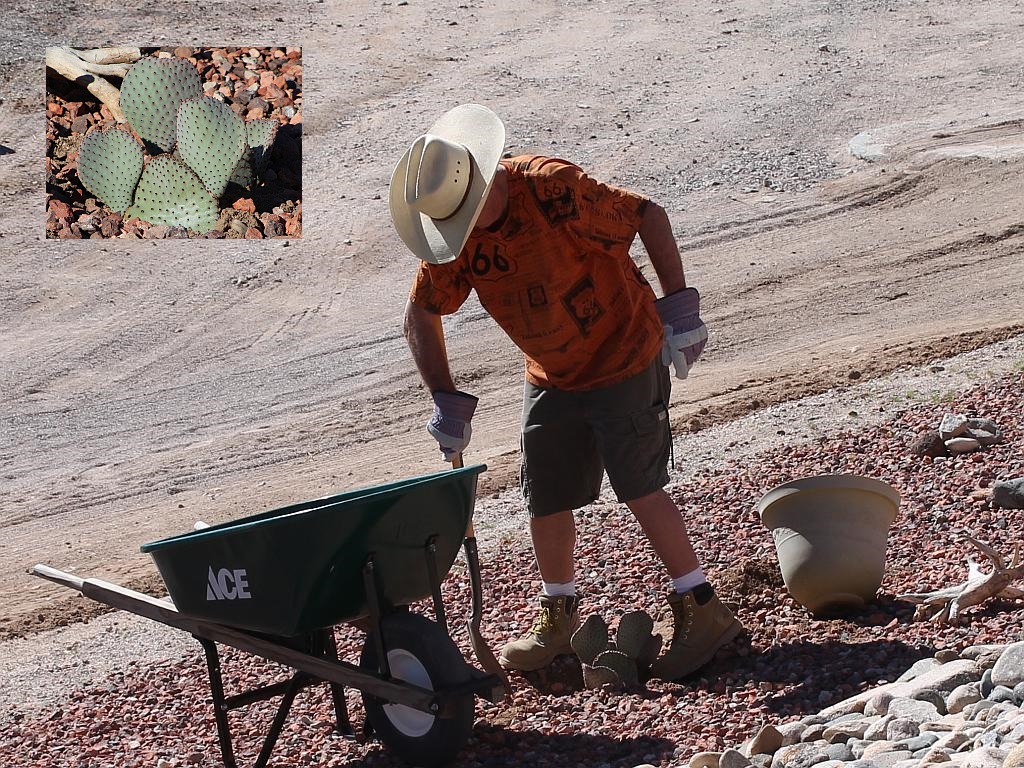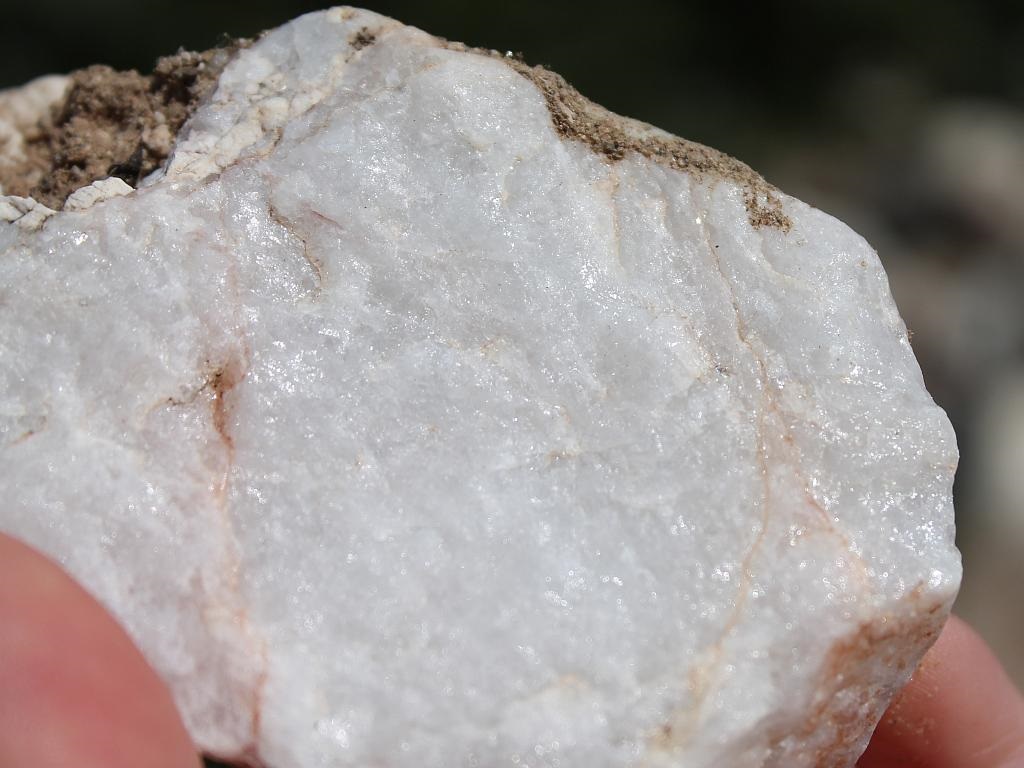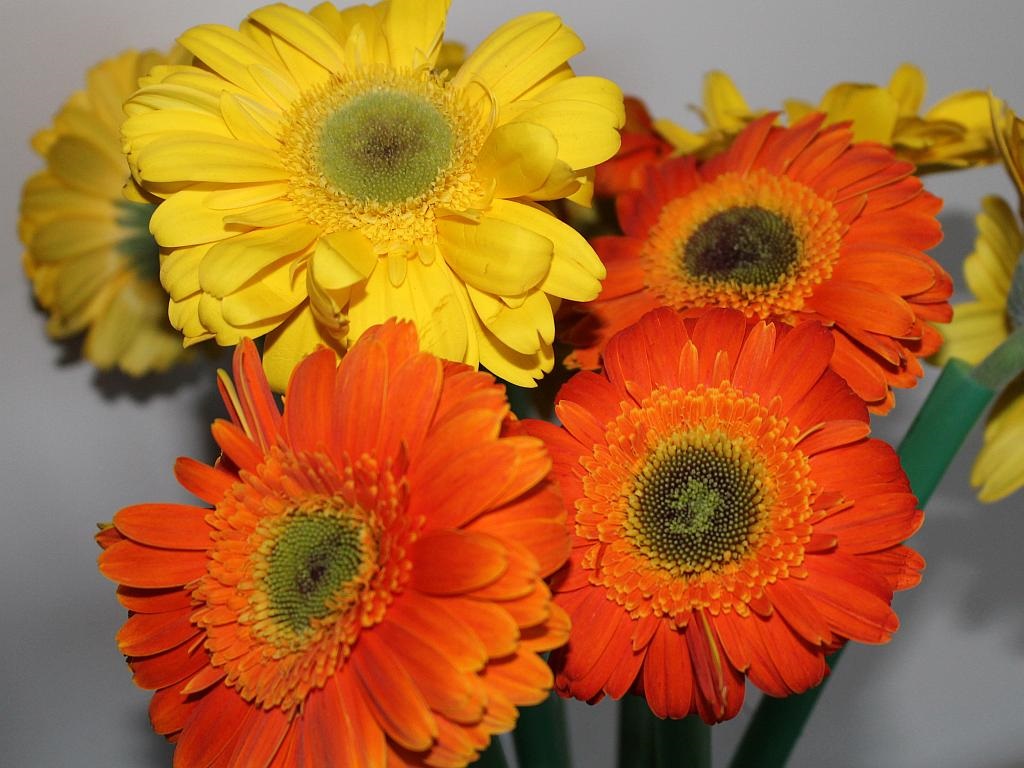This is one cluster of a couple of new flower clusters opening on the flowering plum tree that we recently had replaced. The old tree was destroyed by the monsoons last summer when its trunk snapped in a microburst.
The new tree, at our request, is a more substantial one than the little sapling that it replaced. The little trunk was two or three inches in diameter and the new tree is more like six or maybe seven inches. In addition to the new little flowers, purple leaves on the tree are appearing.
There will be some rain coming to town this weekend to nourish all the spring flowers that will be coming soon. I can’t wait for spring flowers everywhere. Click on the image to enlarge.

